Barcelona’s Charming Gothic Quarter
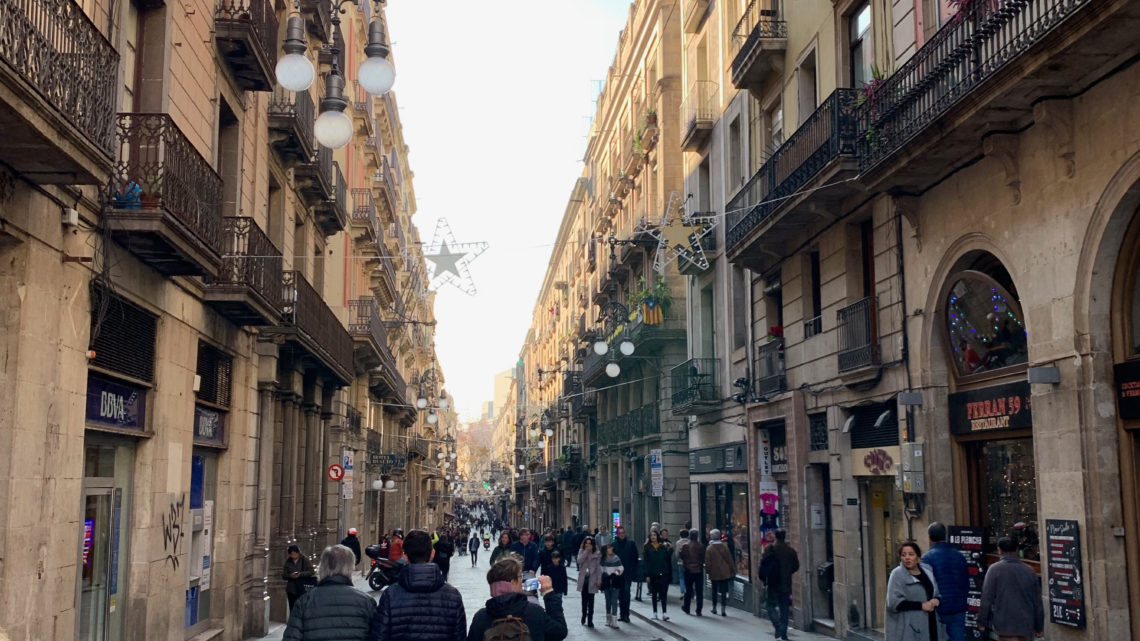
As one of the world’s architecture capitals, Barcelona is best known for its Modernisme buildings. I experienced this whimsical architectural style throughout my exploration of the Eixample district. I also visited Antoni Gaudí’s La Sagrada Família and Park Güell: two of the city’s most prominent examples of the Modernisme style. Although Barcelona is most famous for its modern buildings, the city also has a charming old town that follows a more traditional style of architecture. This area is divided into several neighborhoods, including the Barri Gòtic, also known as the Gothic Quarter.
That morning, I met up with my friends for a tour of this medieval corner of the city. Thankfully, my hostel offered a free walking tour that focused primarily on the Gothic Quarter. As I enjoyed this type of tour in Brussels, I decided it would also be worthwhile to do one in Barcelona. My friends and I were escorted by a staff member to meet up with our tour guides in the Plaça de Catalunya.
Plaça de Catalunya
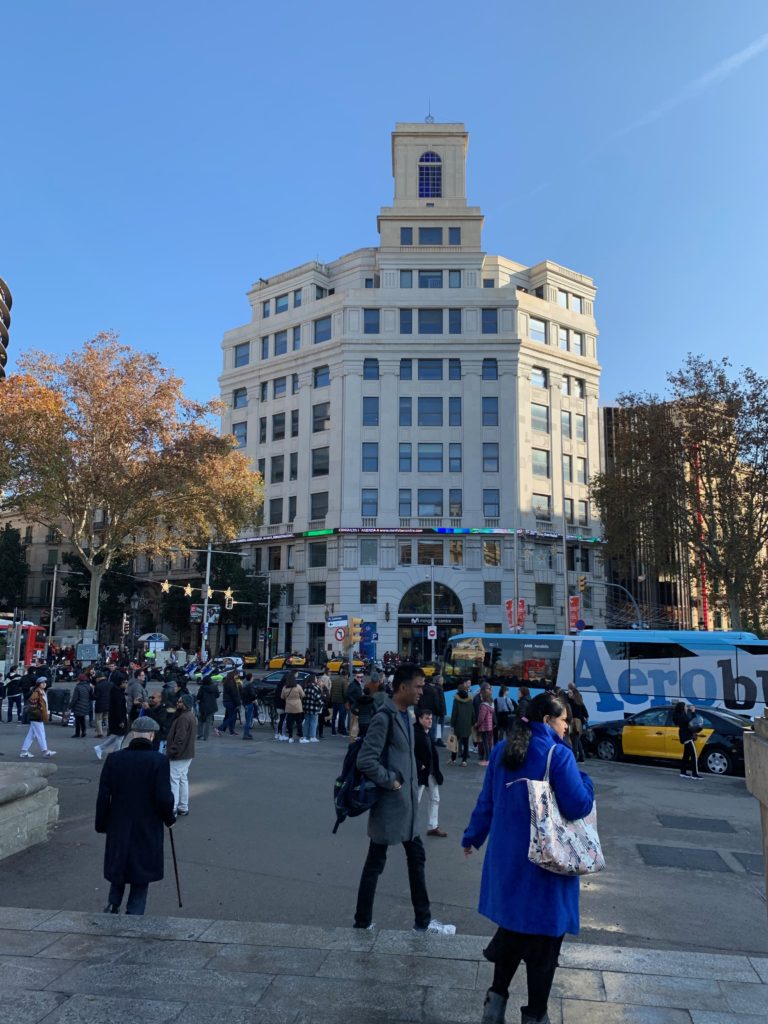
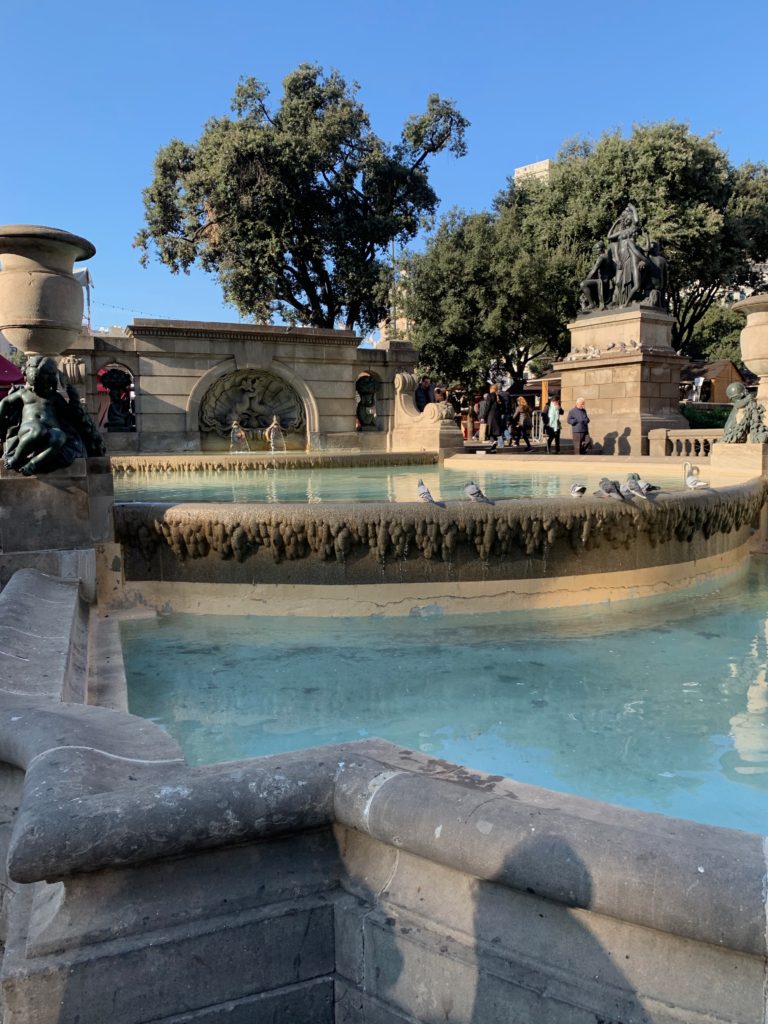
We began our tour in this beautiful square, where the newer Eixample district meets the old town. Many of the city’s major roads converge in this grand square. The plaza boasts a large fountain, as well as a central hardscape area that features Barcelona’s seasonal Christmas market.
Las Ramblas
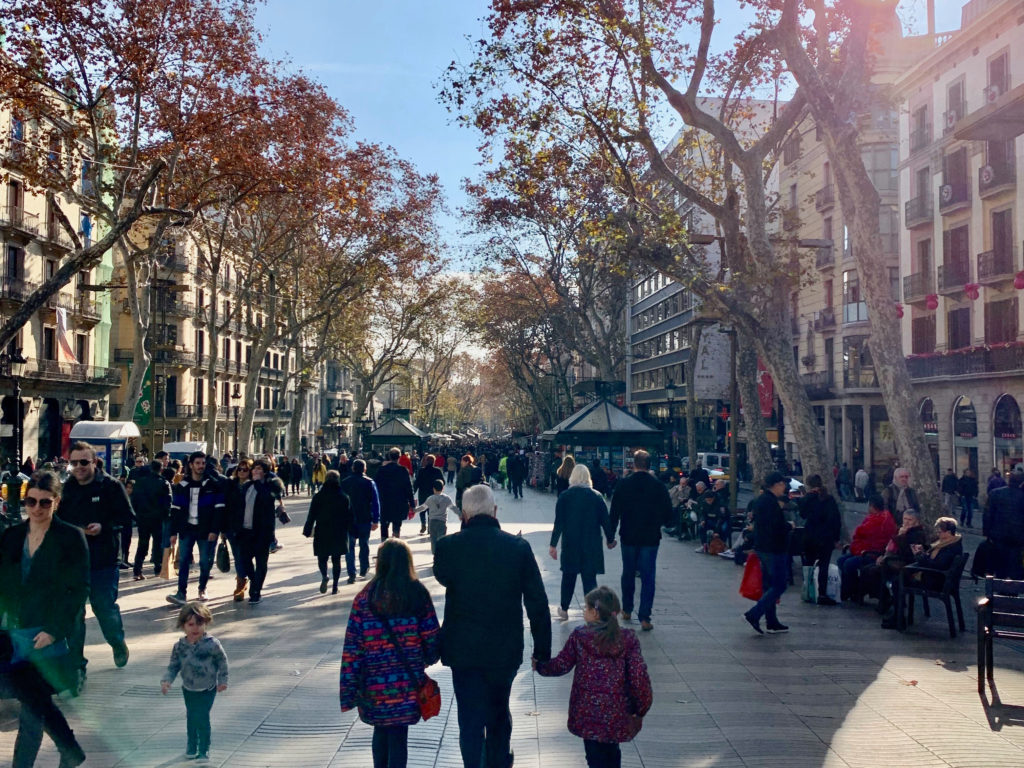
The plaza is also the starting point for one of the city’s most famous streets: Las Ramblas. This wide-open promenade is the main pedestrian thoroughfare in the old city and is located between the Gothic Quarter and El Raval. At first glance, Las Ramblas appears to be one large promenade. However, it actually consists of a series of smaller streets that form a connection between the Plaça de Catalunya and the waterfront.
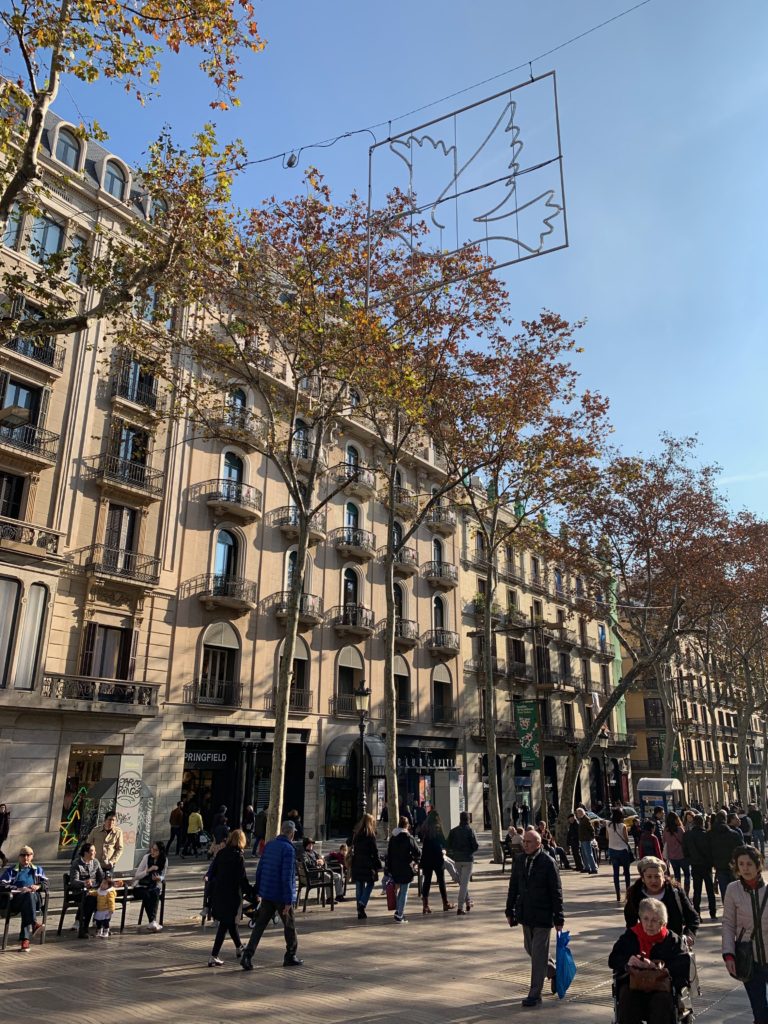
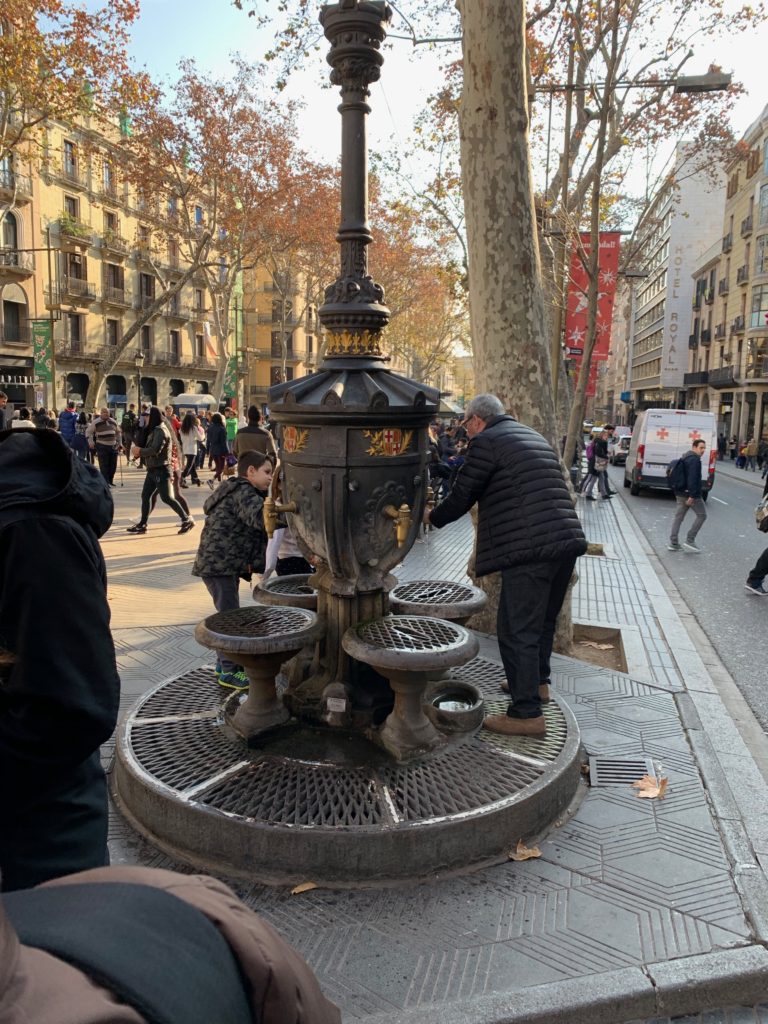
The promenade is lined with large trees and traditional Spanish-style buildings inspired by Gothic and Renaissance architecture. Las Ramblas can get very crowded, and as a result, is a haven for pickpockets. I made sure to closely guard my valuables as I walked down the street. Our guide pointed out an ornate drinking fountain topped with a lamppost. Those who drink from this fountain, known as the “Font de Canaletes,” are destined to return to Barcelona. Since I had fallen in love with the city, I happily drank the water in hopes of returning one day.
Roman Ruins
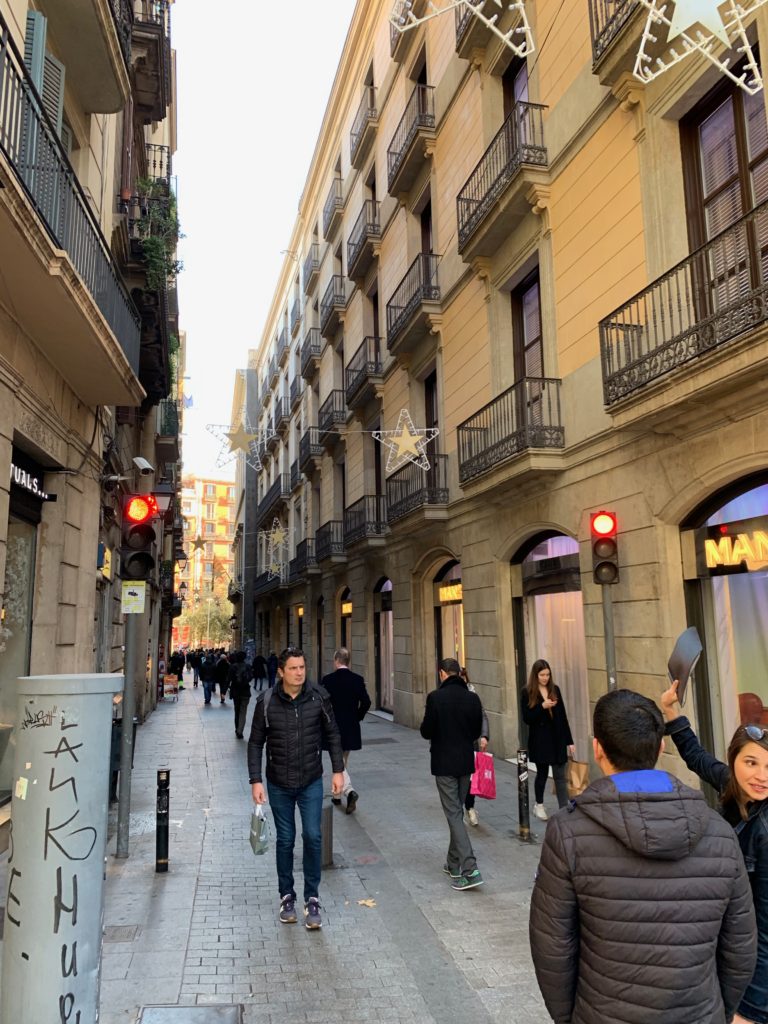
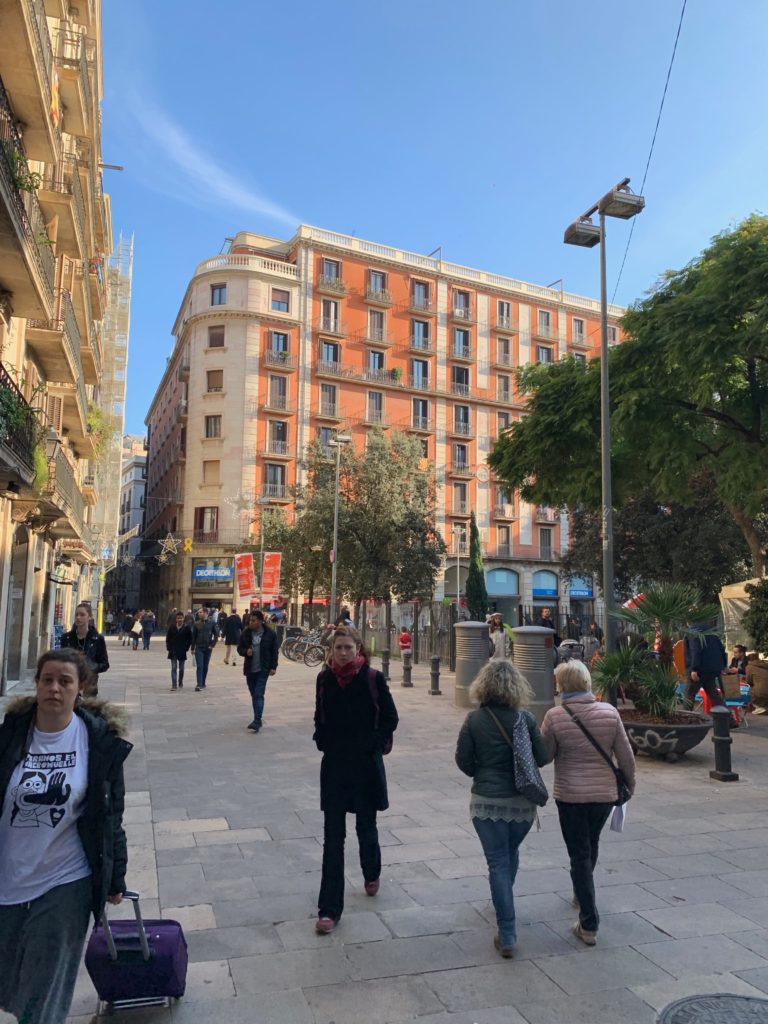
Our tour guide took us off the main street and onto one of the neighborhood’s smaller alleys. The Gothic Quarter is characterized by a labyrinth of narrow streets that do not follow a grid pattern. Periodically, the streets open up into squares that are flanked with beautiful apartment buildings. We arrived at one of these squares: the Plaça de la Vila de Madrid.
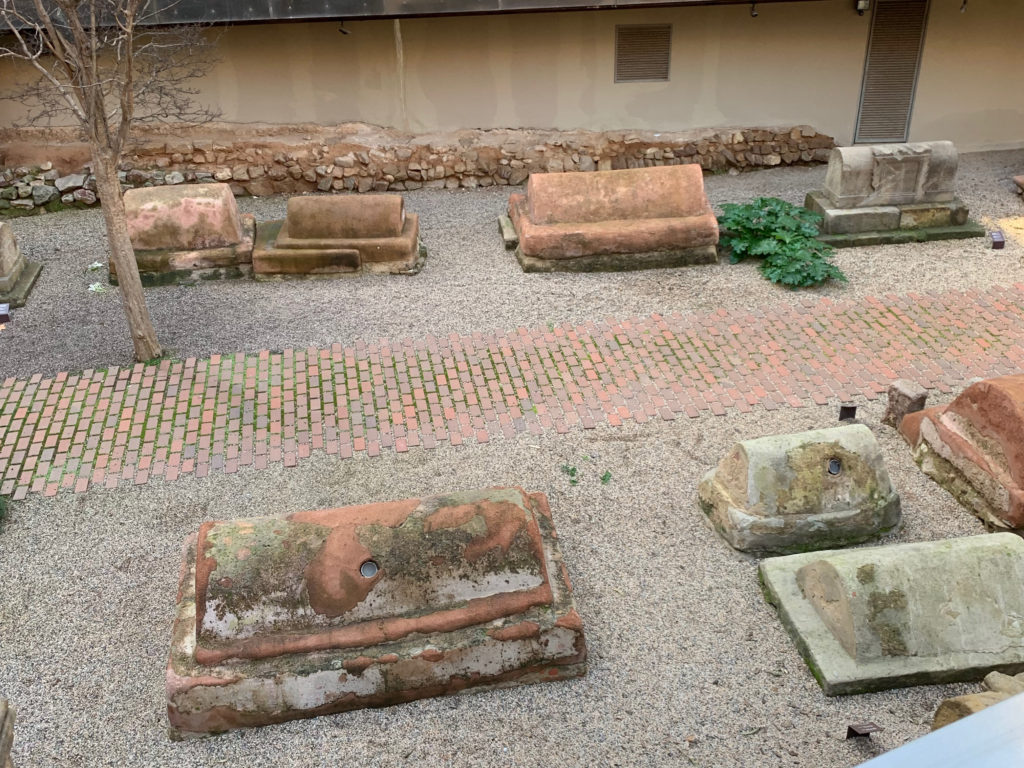
This plaza is unique, as below the main streets lie the ruins of an ancient Roman city. Like many places in Europe, the Romans founded Barcelona and their remains can still be found throughout the city. From the street level, I looked down into an old, well-preserved Necropolis. The site features several tombstones dating from the 2nd and 3rd centuries A.D.
Barcelona Cathedral
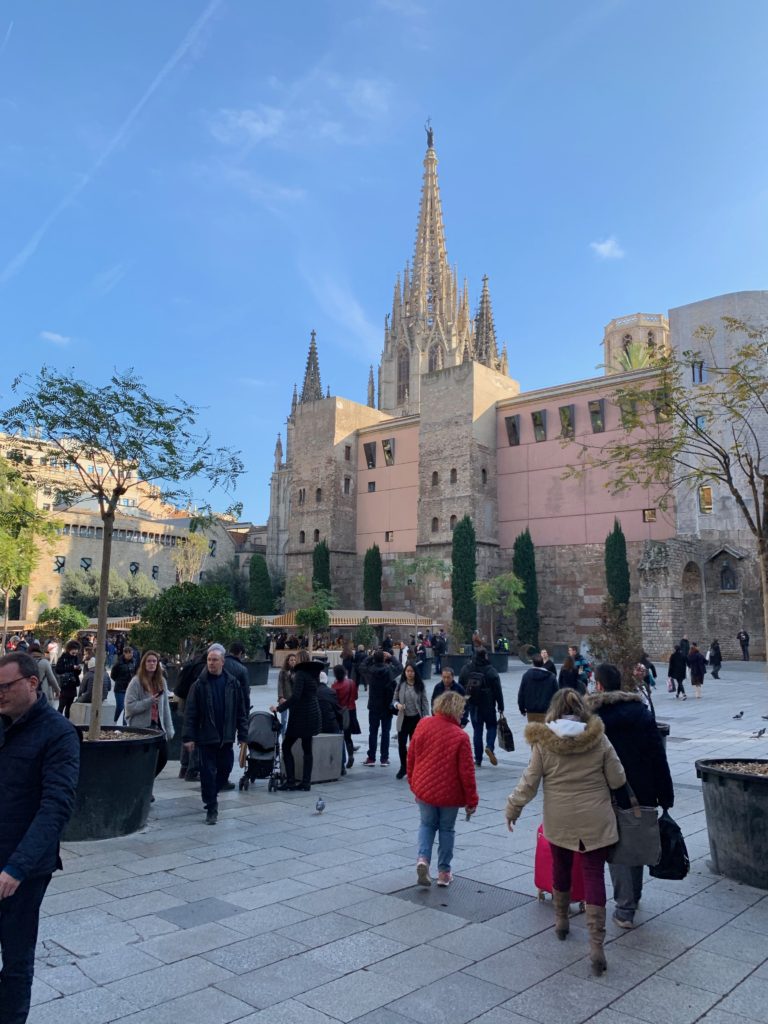
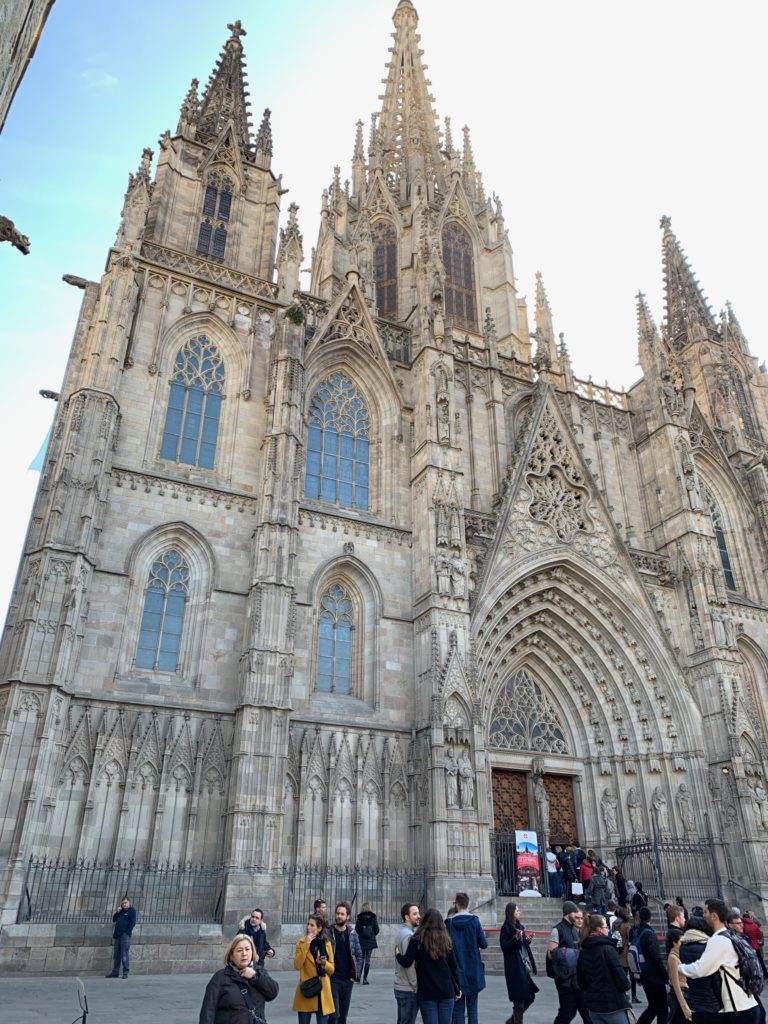
We continued further into the Gothic quarter towards the Plaça Nova, which features one of the neighborhood’s grandest buildings: The Barcelona Cathedral. This is by far my favorite spot in the entire old city. The cathedral is majestic, featuring intricate Gothic ornamentation. The most notable architectural element is the imposing vaulted entrance, which is lined with carvings and statues. The stunning front façade also features eight stained glass windows and three tall spires, each decorated with Gothic-style pinnacles. Although the original cathedral was constructed between 1298 and 1420, today’s neo-Gothic façade was not finished until 1913.
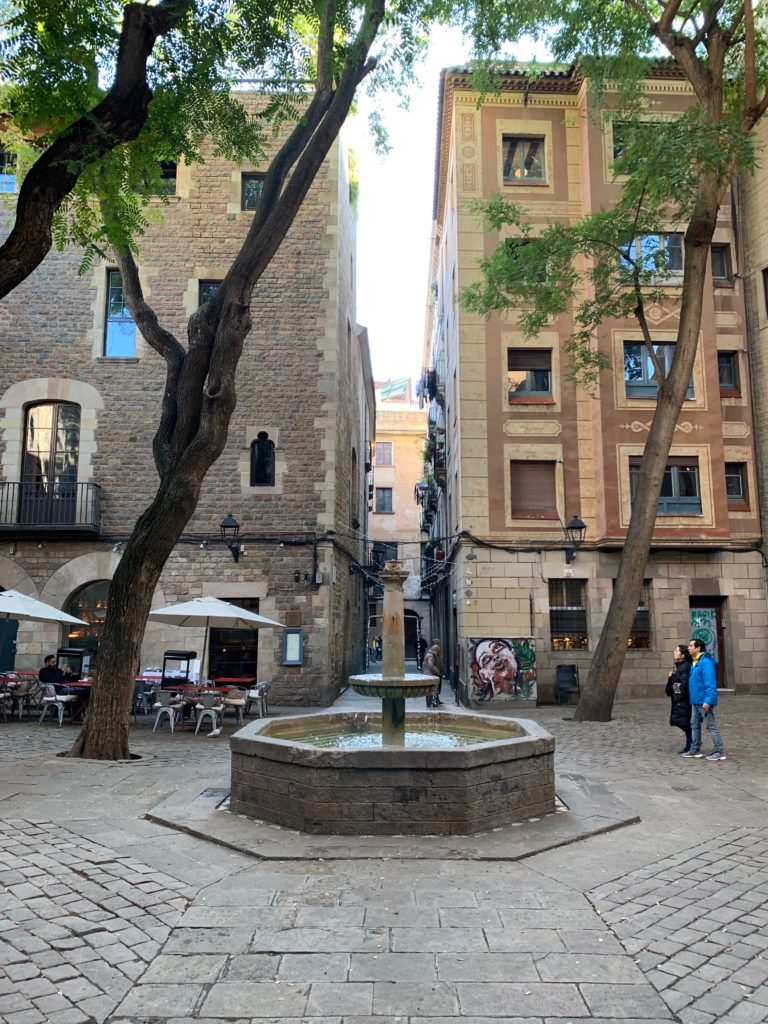
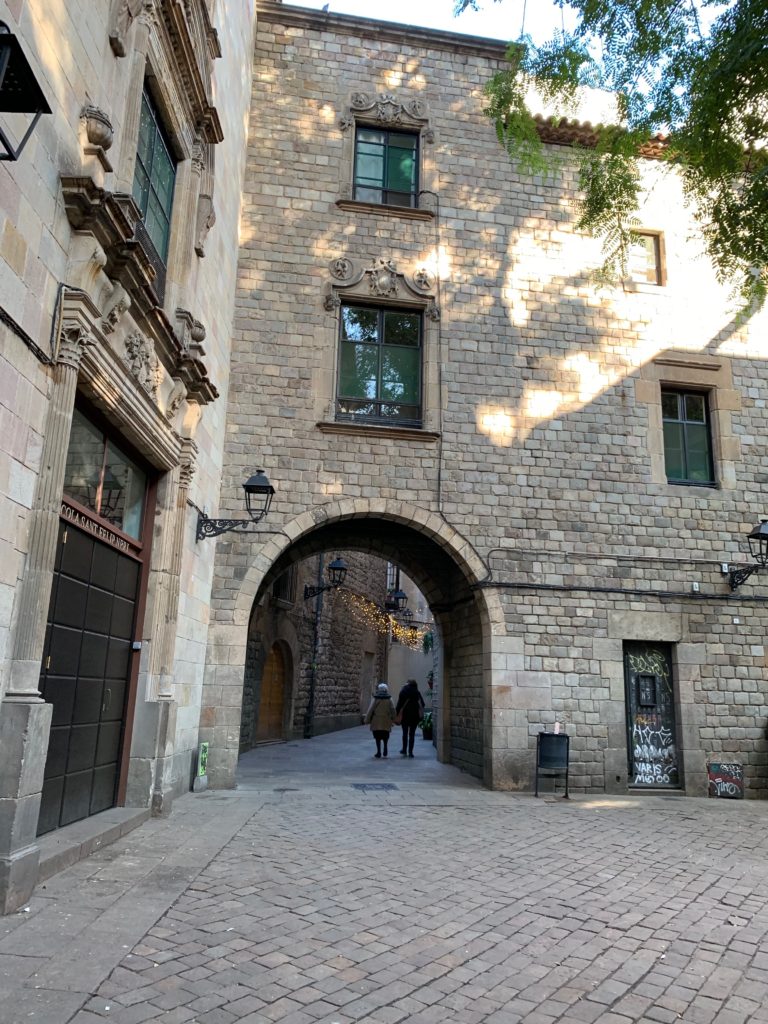
Our group veered back into the narrow alleys near the cathedral and eventually reached a quaint square surrounded by stone buildings. This square, called the “Plaça de Sant Felip Neri,” is named after its small church and features an octagonal fountain as its centerpiece.
Plaça de Sant Jaume
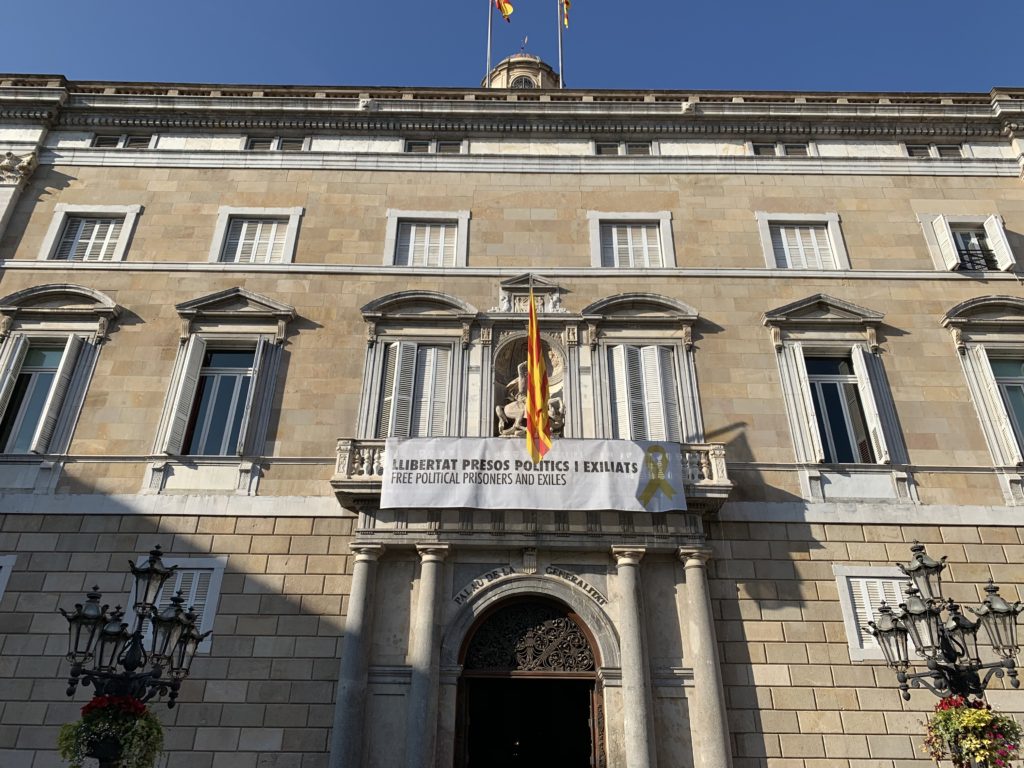
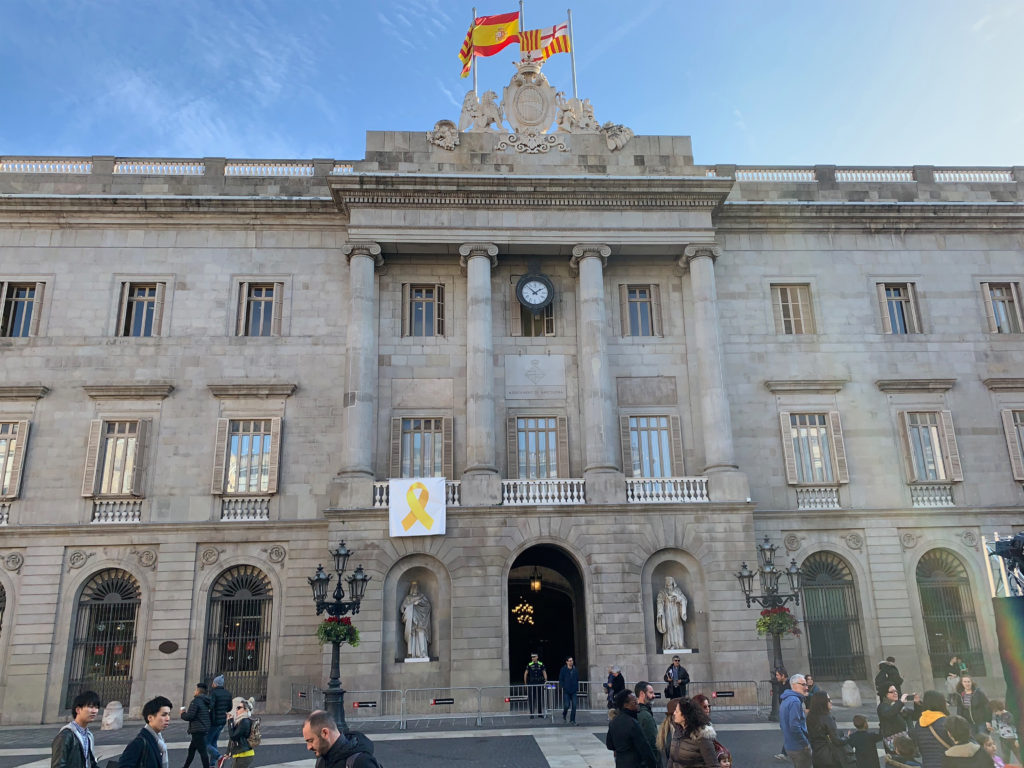
We eventually reached the Plaça de Sant Jaume, where the Palau de la Generalitat de Catalunya and Barcelona City Hall are located. Both of these buildings feature grand façades, inspired by Renaissance and Neoclassical architecture respectively. This square is also an important symbol of Catalonia, as it is the administrative center for both the city and the surrounding region.
Catalonia has a distinct culture and language from the rest of Spain. As a result, it has been fighting for independence for many years. Recently, the region held an illegal referendum, which ultimately resulted in several of Catalonia’s leaders ending up in prison. Despite this, a strong sense of Catalan pride is found throughout Barcelona. Wherever I walked, I could see the Catalan flag proudly displayed on apartment balconies. Additionally, yellow ribbons are on display throughout the city as a symbol of solidarity with the region’s pro-independence leaders.
Plaça Reial
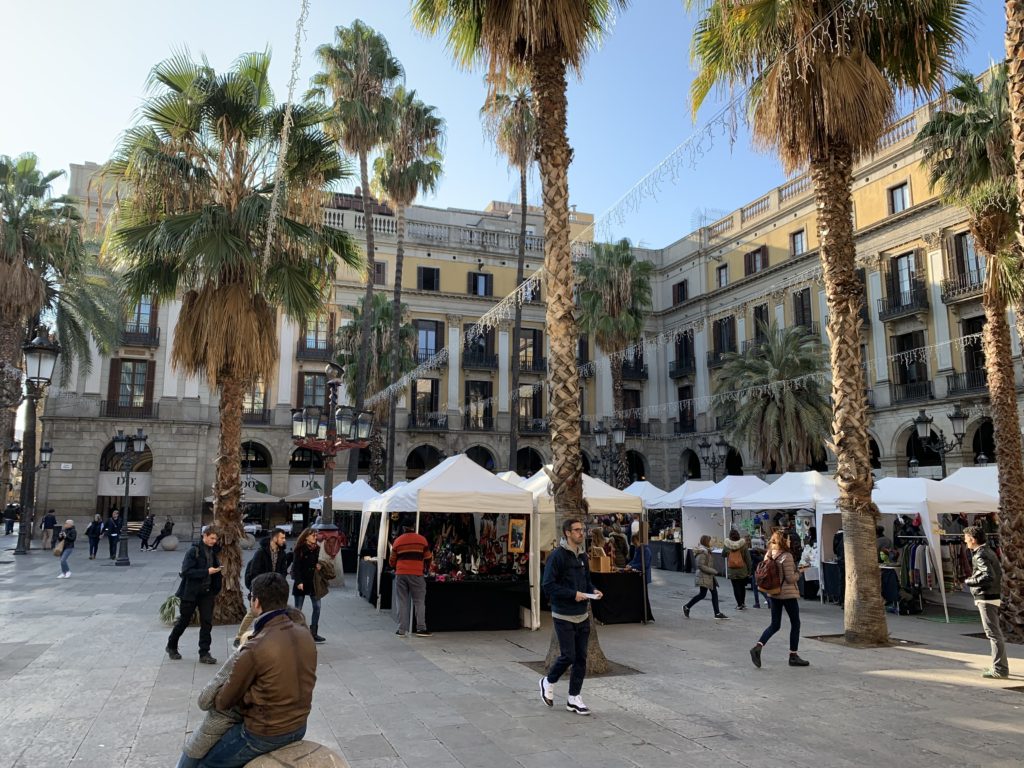
The tour ended at Plaça Reial, where I had watched a Flamenco show the night before. At night, this square is famous for having some of the city’s best clubs and bars. During the day, I got to admire its beautiful Spanish-style architecture. These yellow buildings were built during the 19th century and feature large porticoes that house the square’s restaurants and clubs. The square is also flanked with palm trees and features lampposts designed by Antoni Gaudí.
Barcelona’s Waterfront
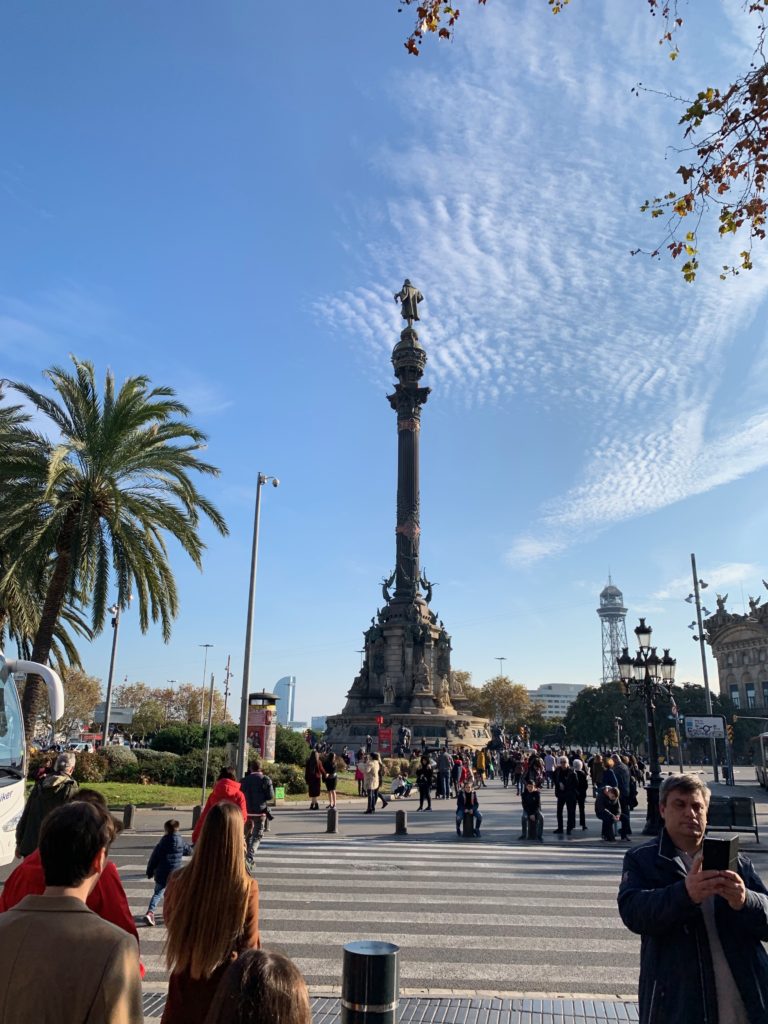
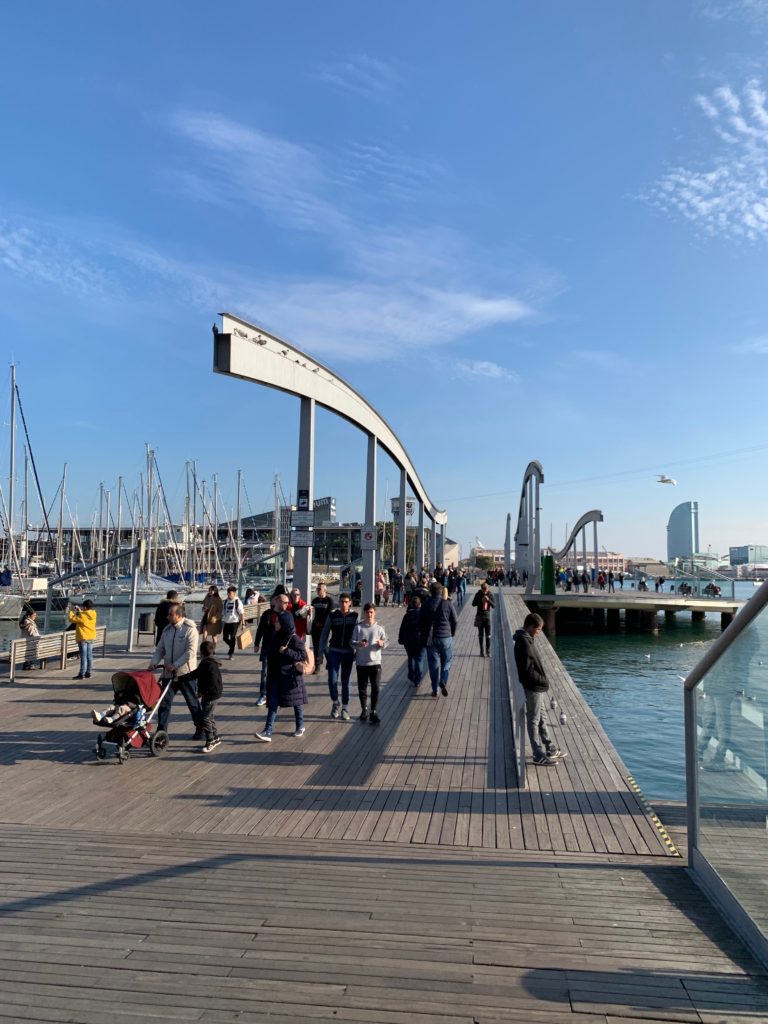
After the tour finished, I parted ways with my friends and headed back to Las Ramblas. From here, it was a short walk to the end of the thoroughfare at the Columbus Monument. This tall monument is located at the center of a roundabout along the waterfront. It was built in 1888 to honor Christopher Columbus’s voyage to the Americas.
Barcelona has a prominent waterfront featuring plenty of sailboats and modern buildings. A large pedestrian bridge, known as “La Rambla de Mar,” extends beyond Las Ramblas to connect the port district with the old city. The wavy wooden bridge can be opened, allowing boats to enter and exit the harbor.
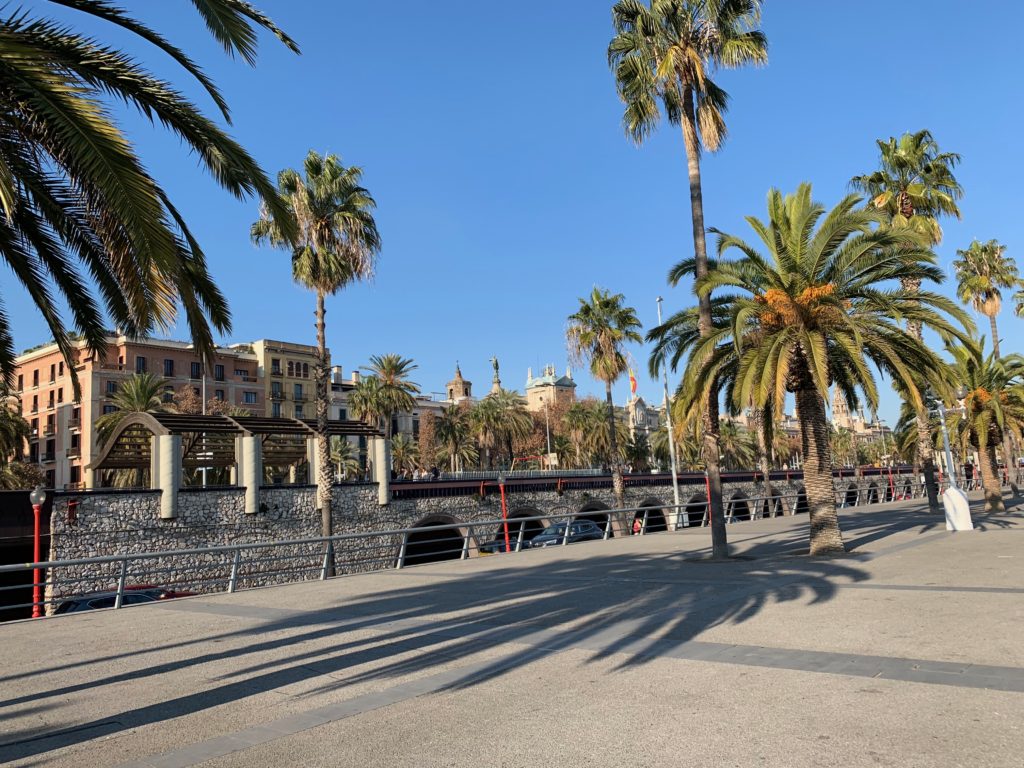
I continued my walk along the harbor, which features some imposing buildings lining a major highway. The city’s palm trees and colorful buildings contrasted beautifully against the bright blue sky on this sunny day. From here, I re-entered the city’s narrow streets in search of a place to eat.
La Ribera
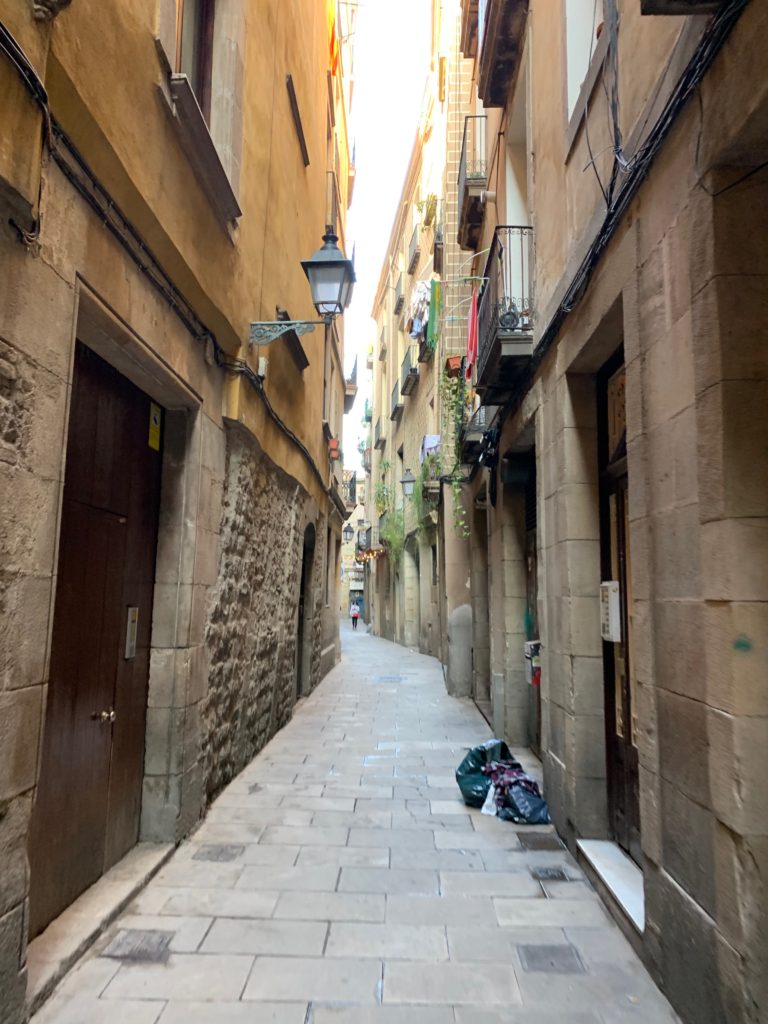
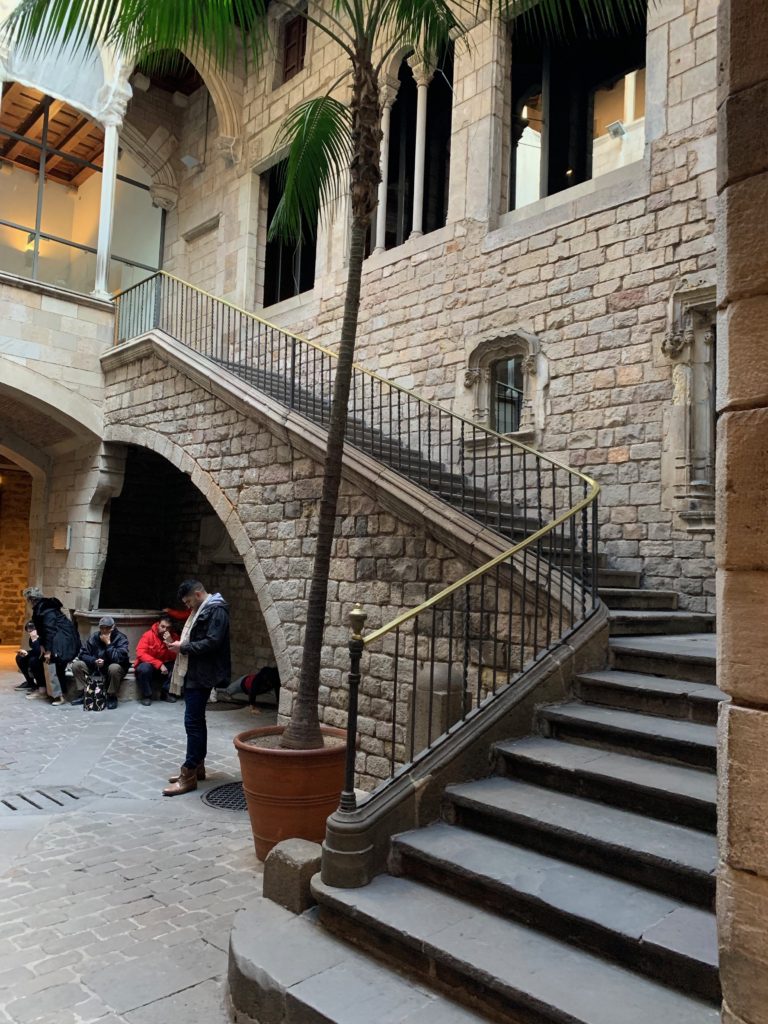
I stopped at a restaurant for some delicious paella before heading back into the old city. I entered La Ribera: another neighborhood with narrow alleys and traditional buildings. This area of the city is home to the Picasso Museum, which features a charming Gothic-style courtyard. A staircase leads up to a vaulted colonnade, which houses the main entrance to the museum.
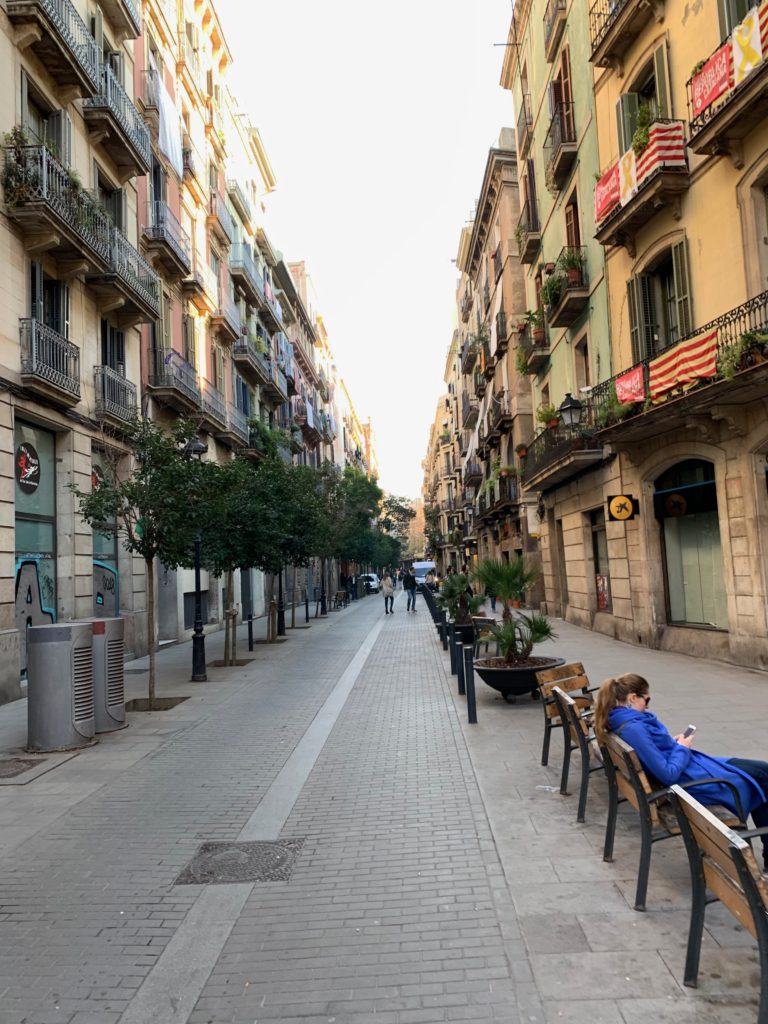
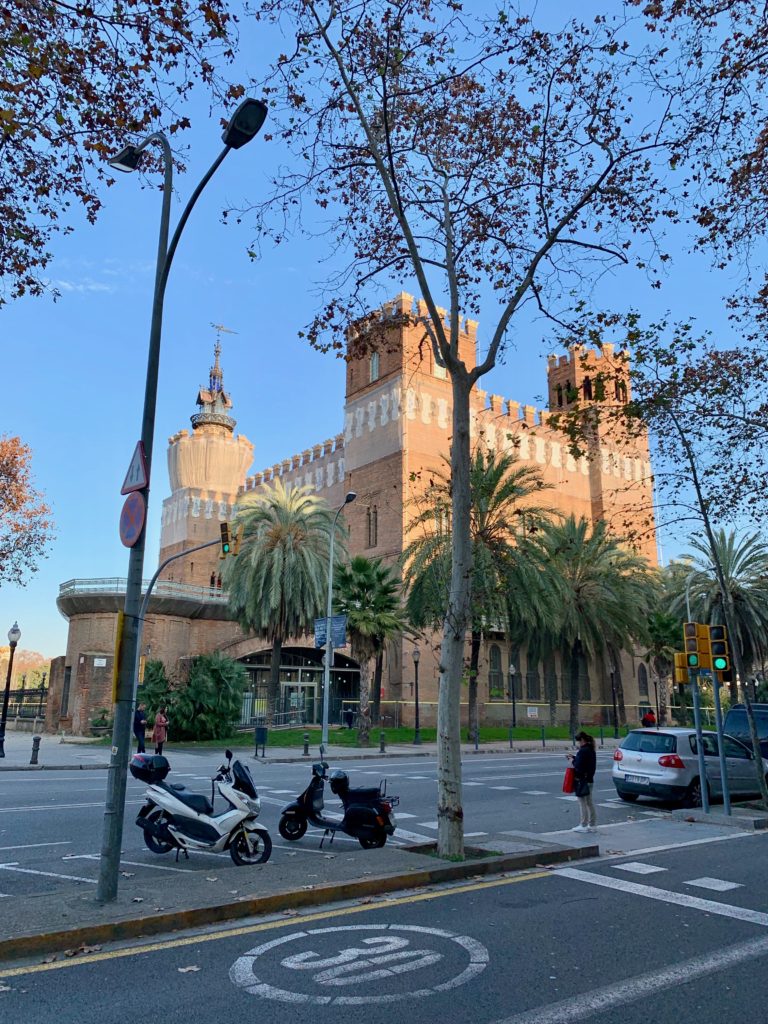
By now, it was late afternoon and my time in Barcelona was coming to an end. I started heading back towards my hostel as I soaked in the city’s architectural beauty for one last time. After picking up my bag, I got back on the metro towards El Prat Airport to catch my flight to Bilbao.
Barcelona is truly one of a kind. Its unique Modernisme architecture is one of the most playful and colorful styles that I have ever experienced. In addition, the city features both a charming old town and some impressive modern buildings. Best of all, I stayed at one of the greatest hostels during my travels in Europe, where I met awesome travelers from all over the world.
